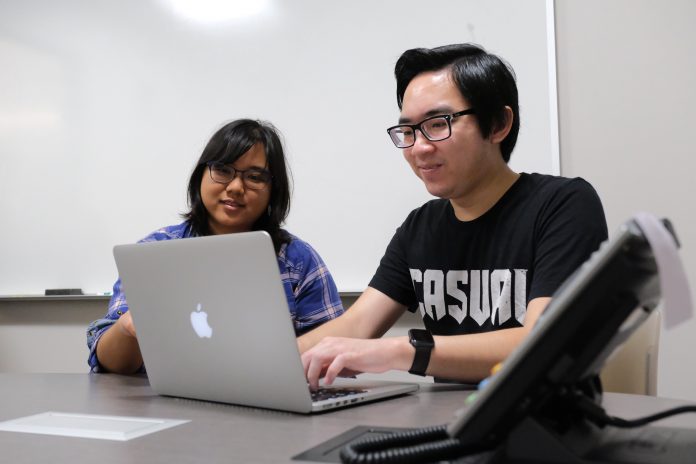As the semester comes to an end, faculty and students alike reflect on the past several weeks, when the COVID-19 pandemic and a priority for health and safety changed everyone’s teaching and learning experiences at the University of Hawaiʻi–West Oʻahu.
When the University of Hawaiʻi officially announced on March 18 that it was transitioning to an online delivery of courses for the remainder of the spring semester, major adjustments had to be made by everyone.
How did faculty keep students engaged after the sudden switch to remote learning? How did students fare during the transition from face-to-face to online classes? Overall, what was everyone’s reactions to these changes brought on by the pandemic?
“I was very grateful that my professors were very supportive during the switch to remote learning,” said Chase Yamauchi, 21. “Even the professors who were already teaching online classes were gracious and understanding during this time.”
Yamauchi said on one hand, he was surprised how drastic the changes were to the school as a whole.
“Since I plan to graduate this spring, it was a bit of a shock that my last semester, as well as my graduation, would not go at all as I would have expected,” said Yamauchi, a General Creative Media major. “At first, I was honestly disappointed that, after four years, my college experience would be ending with a sizzle instead of a bang.”
But on the other hand, Yamauchi understands this is a very difficult time and he realized this was the best action the school could take, he said.
“The only way we can fight this pandemic is by taking action to contain it, so I am glad that we switched to online classes, for the sake of everyone’s health and safety,” he said.
“And UH West Oʻahu has been helpful in taking steps to still celebrate graduating seniors, so I do appreciate that,” Yamauchi added.
Many students and faculty shared similar feelings of disappointment about the changes, but coupled with an understanding of the difficult decisions that were made.
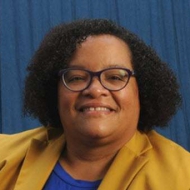
“I was sad, to be honest, about the switch to remote learning,” said Dr. Lynette Williamson, Assistant Professor with the Mathematics, Natural and Health Sciences Division at UH West Oʻahu. “I was really enjoying the face-to-face class time and discussions this semester. Of course, I understand the reasoning for this switch and want all of us to be safe and healthy.”
To continue to engage her students, Williamson has tried to keep open the lines of communication, for example, via online discussion board areas, videos and audio files out to students, and online Zoom “office hours.”
“For some of my students, they just want to talk and connect,” she said. “Often we spend more time catching up or talking about how they are feeling, then talking about actual course content.”
The actual transition to an online format has not been difficult for Williamson because of her years of experience teaching online. But she made sure to help her fellow faculty members, especially those in her division (MNHS), by providing a “tip document” as a resource to help in the transition from face-to-face to online courses.
“If a faculty member was not experienced in teaching or creating an online course, I felt that they needed as many resources as possible and I tried to make the tip document practical and simple,” Williamson said. “The key is to make the online delivery the best you can and know that it will not be perfect or exactly as it was in face-to-face mode.”
Faculty turn to innovation and flexibility to engage and connect with students
Among the faculty members who Williamson helped with the transition was Dr. Lelemia Irvine, Assistant Professor of Physics.
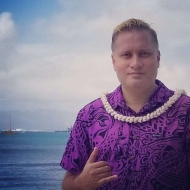
“This is my first time teaching online. Ever,” Irvine said. … “So this COVID switch really turned my life upside down.”
But Irvine embraced the challenge and is grateful for the resources he has learned to fully utilize as a result, including Laulima, the course management and collaborative resources tool supported for enhanced/total online teaching and collaborative projects at UH.
“Even though I don’t like the reason because it’s a sad situation, it forced me and pushed me to learn something new,” Irvine said. “And I was real excited about that and to try to provide a quality service to our haumana so that they can be the best that they can despite this unprecedented time.”
To continue to keep his students engaged, Irvine turned to innovation and creativity, such as using Adobe Spark, an online and mobile design app, to create videos for student announcements and lessons, which he also posts to YouTube.
In addition, Irvine collaborates with Assistant Professor of Accounting Dr. Eric Wen, who also teaches computer science, to do hands-on labs for their PHYS 152L course.
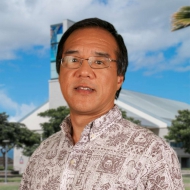
“I think this really keeps the students engaged; they have to make the project with their own hands in their own homes,” Wen said. “There is a classic experiment in electricity and magnetism called the RC circuit, which consists of a resistor and capacitor in series.”
Irvine was able to get to the students the required materials, basically an electronics kit with a micro:bit, a type of pocket-sized computer.
“Using a micro:bit, a device from computer science, over Zoom, we were able to guide the students to build and study the RC circuit in their homes,” Wen said. “I think this is a really great use of the platform, where students, in their own homes, can really hands-on do an experiment.”
While finding ways to engage students is important, Dr. Garry Roy, faculty lecturer in the MNHS Division, Health Science & Early College Program, noted that teachers and students alike need to pay attention to the psychological effects of COVID-19 and social distancing.
“To my fellow instructors, if you are not safe and healthy in a holistic sense, you will be unable to help your students,” said Roy, who is also a medical doctor in geriatric psychiatry. “You will be unable to pick up signs of apathy, depression, anxiety, and abuse since you will be in your own throes. So get in your own zone, zen, routine, schedule, and exercise.”
COVID-19 and social distancing is a trauma America is experiencing, he said.
“In times like this, your class must be part of the therapy, solution or cure (figuratively),” Roy said. “Our social attachments have been frayed, so I try to re-establish these by having a ‘Discussion Forum Check-In Task.’ ”
This is where students post how they are doing and share their feelings, likes, and interests, said Roy, who also noted the importance of structure and schedule (he ran his class with synchronous and asynchronous features), and support (he turned to guidance counselors and student advisors for help for his early college students who were at risk).
“You just can’t motivate students alone in this climate,” Roy said.
Events go virtual, too
While courses were affected by the COVID-19 pandemic, so were on-campus events, many of which were cancelled. Others moved to an online format, including the semesterly Student Research and Creative Works Symposium on April 21, an important event for many students.
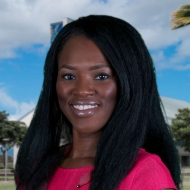
“Students have been working hard on their symposium projects all semester, and we, the symposium faculty, wanted to ensure that our students still had the opportunity to showcase their hard work,” said Dr. Camonia Graham-Tutt, Assistant Professor of Community Health.
Symposium faculty decided to go with a virtual format for the first time, to allow students to present their research from home, via Zoom.
“It was a pleasant surprise to see registration totals at 65 people the day before the symposium and then to see final counts for the virtual symposium totaling 100 people exactly,” she said. “It was utterly amazing to have between 18 and 30 people in each of the four symposium sessions.”
Faculty and students were pleased to know that the symposium was not cancelled and that it was being held virtually instead, Graham-Tutt said.
“At the conclusion of the symposium, we received several mahalos from participants on island and on the mainland that enjoyed the student presentations and being able to attend the event,” Graham-Tutt said. “Finally, it gave students more visibility for their work beyond the traditional symposium, which we were told seemed to allow them to think even more critically on their feet.”
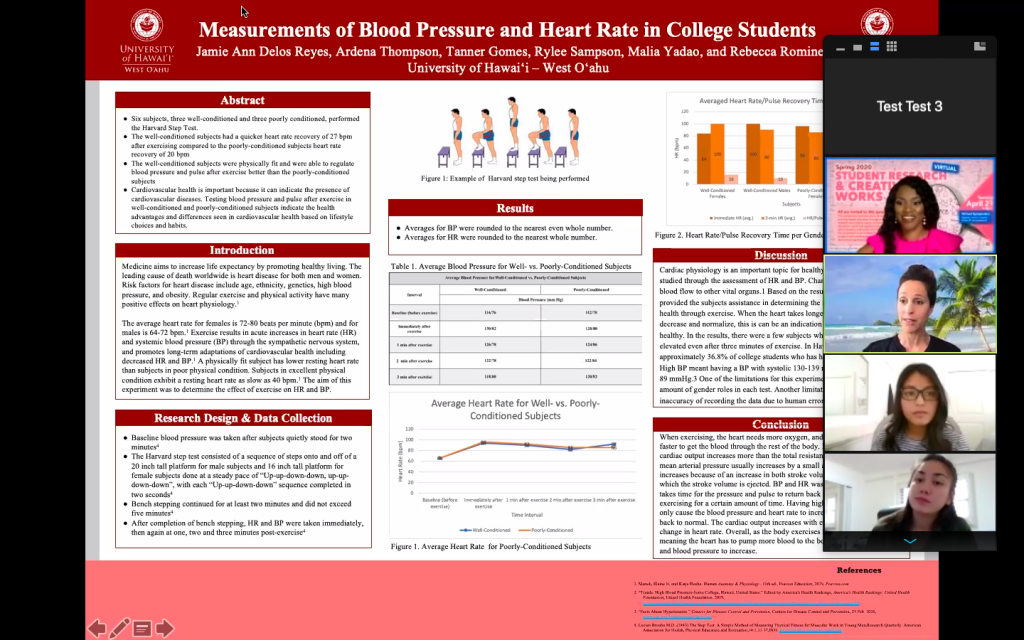
Students do their best to stay positive
For many students, the changes brought on by the pandemic to their learning experience resulted in reactions ranging from feeling shocked with the sudden transition to trying to remain focused and positive as they wrap up the semester.
“(It) was a bit surprising because I did not expect this to happen so quickly,” said student Brandon Chun. “I did not expect to finish my semester with my hybrid class going completely online and not having to meet in person for the rest of the semester anymore.”
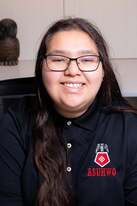
Cassie Hardin, an Information Security and Assurance major, said the “sudden and unexpected” switch to online-only classes at first didn’t come without issues for her.
“For example, it took me a while to learn how to use online programs such as Zoom comfortably since these programs were so new to me as a first-year student,” Hardin said.
Hardin serves as the freshman senator of the Associated Students of University of Hawaiʻi–West Oʻahu.
“The overall changes to online-only classes shifted my purpose as an ASUHWO senator, and that purpose was to stay positive for the students I’m helping during this tough time,” Hardin added.
ASUHWO sophomore senator Brient Kealoha Hutchinson, 20, said while it’s nice to be with family at home where it is safe, the “cozy” surroundings has made him a been a bit slower when it comes to school work.
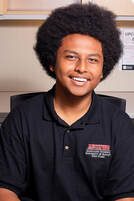
“I will be honest, I have been a lot more laid back and sluggish doing my assignments,” said Hutchinson, who is majoring in Creative Media. “Yes, I do maintain my productivity, but again home for me is like a sanctuary and there are so many other things that I can be doing as well. I continue to accomplish my tasks; it may take a little more longer, but things are going well.”
What helps keep him on track and engaged is Zoom, which he has found to be a good form of communication and a good way to learn materials.
“More so, having class via Zoom is nice, because at least I can see some of my fellow classmates, professors, and then we’re still being interactive, even if it is still digitally,” Hutchinson said.
Warren Domingo, 20, said a good computer with fairly stable internet meant the transition was not as bad for him as it may have been for others.
“Additionally, I have had a lot of online classes in the past, so I understand the troubles of navigating through online classes,” said Domingo, a student in the Information Security and Assurance program. “However, this is not just about what I do on my end.”
Everyone’s success takes a joint effort among faculty, staff, and students, Domingo noted.
“All my instructors have gone out of their way to accommodate the students, doing everything in their power to ensure the students are able to complete their education,” he said.
Additionally, the students are all supportive of each other, helping when someone does not understand a technical problem, he said.
“We all contribute and make suggestions to better the learning experience for everyone and make it a more efficient learning environment despite the unfavorable circumstances,” Domingo said.
Hardin, the freshman senator, similarly said it will take a collective effort to get through these challenging times.
“I learned that even though we must take this crisis seriously, we are not going through this crisis alone because at the end of the day, we are all struggling together,” she said. “It may take a long time for things to recover back to normal, but we always need to stick together no matter what happens.”
